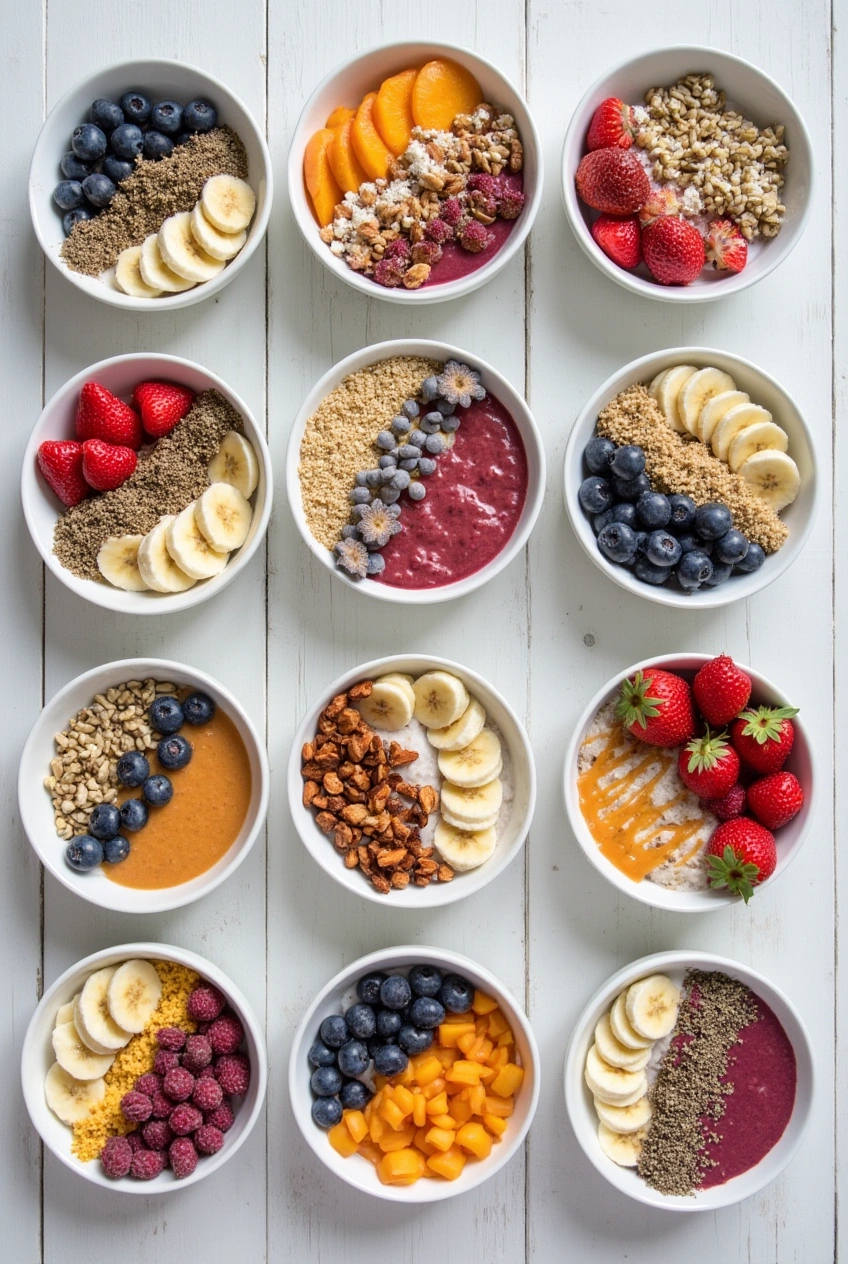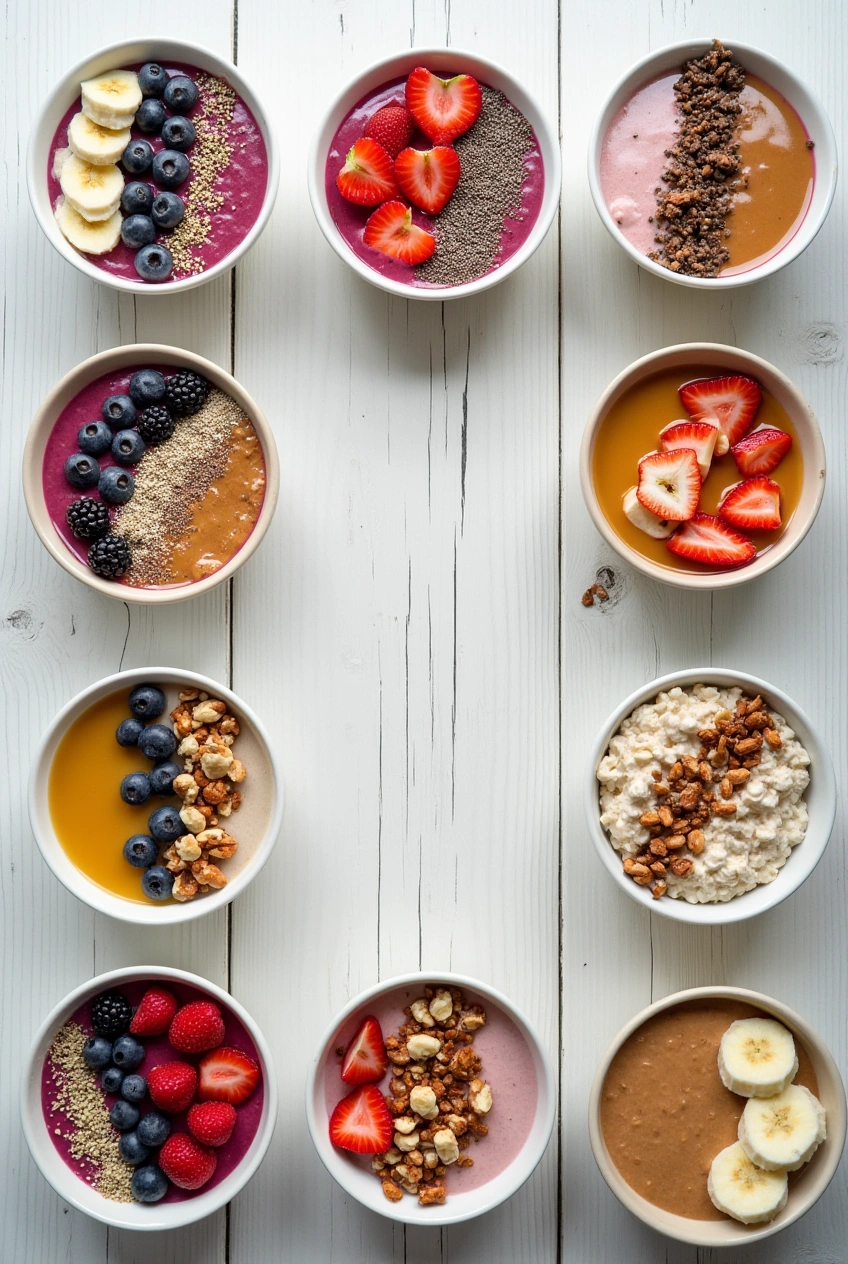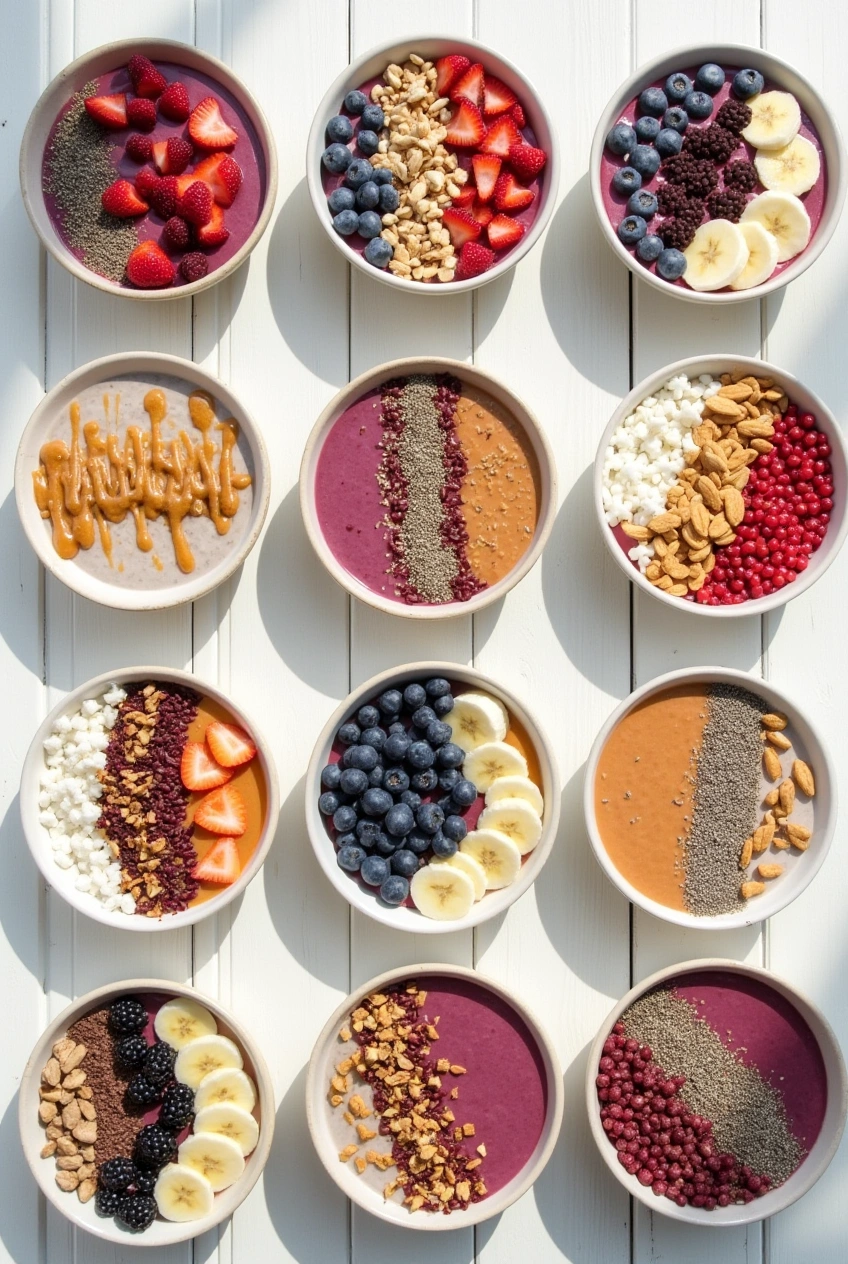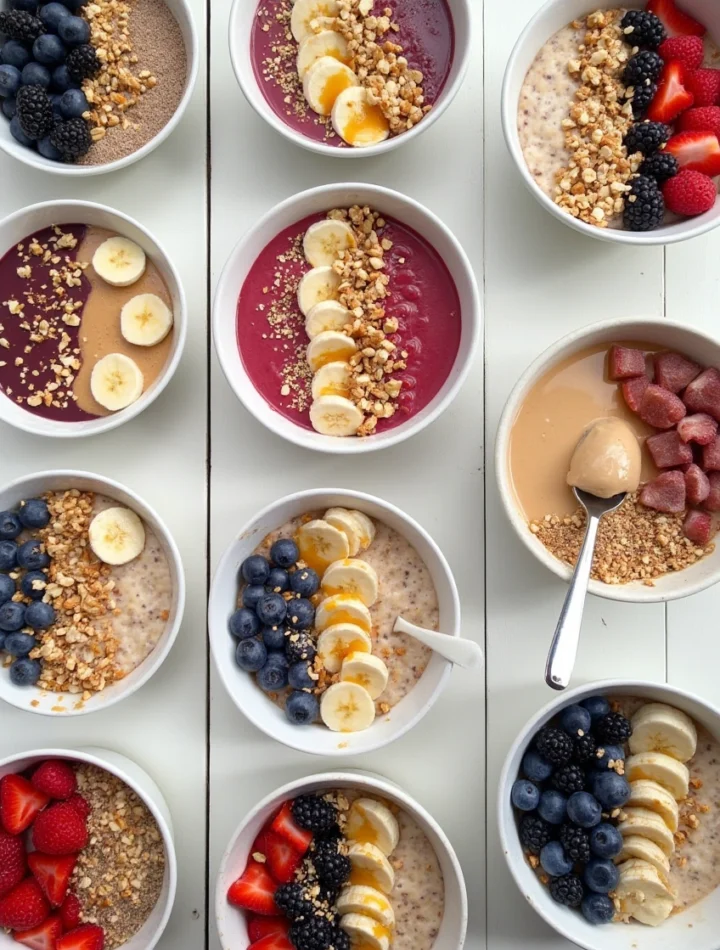Introduction
Tired of rushing through breakfast or settling for sugary cereals that leave you hungry by 10 AM? You’re not alone. Millions of people struggle to find nutritious, satisfying breakfast options that don’t require a culinary degree to prepare.
These oatmeal recipes will transform your mornings with 12 healthy, delicious meals that fuel your body and satisfy your taste buds. From creamy overnight oats to hearty baked variations, each recipe delivers the perfect balance of protein, fiber, and flavor to keep you energized all morning long.
As a certified nutritionist and meal prep enthusiast for over 8 years, I’ve tested countless breakfast combinations to find what truly works for busy lives. These aren’t just any oatmeal recipes – they’re carefully crafted to maximize nutrition while minimizing prep time.
In this comprehensive guide, you’ll discover ingredient selection tips, time-saving cooking hacks, creative flavor combinations, and answers to common oatmeal preparation questions. Let’s turn your breakfast routine from boring to brilliant.

Why These Oatmeal Recipes Work
These oatmeal recipes strike the perfect balance of nutrition, convenience, and incredible taste that transforms your morning routine:
• Uses affordable, pantry-friendly ingredients – Most recipes require basic oats plus simple additions you likely already have • Prep in 5-15 minutes for maximum nutrition – Quick cooking methods that preserve nutrients and save precious morning time
• Perfect for meal prep or fresh breakfast daily – Versatile enough for weekend batch cooking or quick weekday preparation • Naturally customizable for dietary needs – Easily adapt for gluten-free, vegan, keto, or high-protein requirements • Provides sustained energy without sugar crashes – Complex carbs and fiber keep you satisfied for hours
Choosing the Right Oats
The foundation of exceptional oatmeal recipes starts with selecting the proper oat variety for your desired texture and cooking method.
Best Oat Types for These Recipes
Steel-cut oats work perfectly for hearty, chewy textures in baked oatmeal and slow-cooker recipes. Their firm bite holds up beautifully to longer cooking times and robust mix-ins like nuts and dried fruits.
Old-fashioned rolled oats are your go-to choice for most stovetop preparations and overnight oats. They cook quickly while maintaining pleasant texture and absorb flavors exceptionally well.
Quick oats excel in smoothie bowls and when you need ultra-fast preparation. While they create creamier textures, they’re ideal for busy mornings requiring minimal cooking time.
Buying Tips
Look for oats with consistent size and color without excessive dust or broken pieces. Purchase from stores with high turnover to ensure freshness, and check expiration dates carefully since older oats can taste stale.
Ask your local bulk food section manager about turnover rates if buying in bulk. Fresh oats should smell clean and slightly sweet, never musty or rancid.
Substitutions
Swap steel-cut oats for rolled oats in baked recipes by increasing liquid by 1/4 cup and extending baking time by 10 minutes. Replace quick oats with old-fashioned oats by reducing cooking liquid slightly and increasing cooking time by 2-3 minutes.
Ingredients & Prep
Proper ingredient selection and preparation techniques ensure your oatmeal recipes deliver maximum flavor and nutrition every time.
Oat Prep Essentials
Always measure oats before adding liquid for consistent results. For creamier textures, pulse rolled oats briefly in a food processor to break them into smaller pieces without creating flour.
Toast oats in a dry skillet for 2-3 minutes before cooking to enhance nutty flavors, especially beneficial in savory oatmeal recipes. This simple step adds remarkable depth to your finished dish.
Liquid Combinations
The liquid you choose dramatically impacts final flavor and nutrition. Combine milk alternatives like almond, oat, or coconut milk with water for optimal consistency and taste balance.
For protein-packed versions, mix Greek yogurt into cooked oats or use protein-enriched plant milks. Allow cooked oats to cool slightly before adding yogurt to prevent curdling.
Pantry Power-Ups
Stock essential flavor enhancers including vanilla extract, cinnamon, nutmeg, and sea salt. These pantry staples transform basic oats into gourmet breakfast experiences.
Keep nuts, seeds, and dried fruits on hand for texture variety and nutritional boosts. Chia seeds, flaxseeds, and hemp hearts add omega-3 fatty acids and extra protein to any oatmeal recipe.

Step-by-Step Cooking Instructions
Master these fundamental techniques to execute any oatmeal recipe with confidence and consistent results.
Pre-Cooking Prep
Measure all ingredients before starting to ensure smooth cooking process. Bring steel-cut oats to room temperature if stored in refrigerator, as cold oats require longer cooking times.
Toast nuts, seeds, or coconut flakes in a dry pan while oats cook to add warm, aromatic elements to your finished breakfast bowl.
Cooking Methods
Stovetop method: Bring liquid to boil, add oats, reduce heat to low, and simmer according to package directions while stirring occasionally. This provides the most control over texture and consistency.
Overnight method: Combine oats with liquid and desired mix-ins in jars or bowls, refrigerate 4-8 hours until oats absorb liquid and soften completely.
Baked method: Mix oats with liquid, sweeteners, and mix-ins in baking dish, bake at 350°F for 25-35 minutes until set and lightly golden on top.
Texture Check
Perfect oatmeal should be creamy but not mushy, with individual oat pieces still visible. Steel-cut oats retain more bite, while rolled oats become uniformly soft when properly cooked.
Taste for seasoning and adjust salt, sweetness, or spices as needed. Remember that flavors will meld and intensify as oatmeal cools slightly.
Final Touches
Let cooked oatmeal rest for 2-3 minutes to achieve ideal serving consistency. This allows residual heat to finish cooking while preventing burnt tongues from overly hot breakfast.
Add fresh fruits, nuts, or delicate herbs after cooking to preserve their textures and prevent wilting or mushiness.
Pro Tips for Perfect Oatmeal
These expert techniques elevate your oatmeal recipes from ordinary to extraordinary while avoiding common preparation pitfalls.
Avoiding Mushy or Bland Oatmeal
Never skip the salt – even sweet oatmeal recipes benefit from a pinch of salt to enhance all other flavors. Add salt to cooking liquid rather than finished oats for even distribution.
Control cooking temperature carefully. High heat creates gummy, overcooked oats while proper low-medium heat develops creamy textures with distinct oat pieces.
Essential Tool Recommendations
A heavy-bottomed saucepan prevents scorching and ensures even heat distribution during stovetop cooking. Non-stick surfaces make cleanup effortless but aren’t essential for great results.
Invest in airtight glass containers for overnight oats and meal prep storage. Mason jars work perfectly and create Instagram-worthy presentations for your healthy breakfast creations.
Use a fine-mesh strainer when rinsing steel-cut oats to remove excess starch that can create overly thick, gluey textures in finished dishes.
Storage & Reheating
Refrigerate cooked oatmeal up to 5 days in covered containers. Add splash of milk or water when reheating to restore creamy consistency lost during storage.
Freeze individual portions in freezer bags for up to 3 months. Thaw overnight in refrigerator and reheat gently, adding liquid as needed to achieve desired texture.
Flavor Variations
Transform basic oatmeal recipes into exciting breakfast adventures with these creative flavor combinations that cater to every taste preference.
Sweet & Indulgent
Create “Carrot Cake Oatmeal” by adding grated carrots, cinnamon, nutmeg, chopped walnuts, and a drizzle of maple syrup. Top with cream cheese yogurt for authentic cake flavors.
Try “Chocolate Peanut Butter” combination using cocoa powder, natural peanut butter, and sliced bananas. This protein-rich version satisfies dessert cravings while providing sustained energy.
Savory & Satisfying
Develop “Everything Bagel Oatmeal” using savory seasonings, nutritional yeast, and topped with sliced avocado and cherry tomatoes. This protein-packed option works beautifully for lunch or dinner too.
Experiment with “Mediterranean” flavors incorporating olive oil, herbs, sun-dried tomatoes, and crumbled feta cheese for a completely different oatmeal experience.
Global Inspirations
Create “Chai Spice” oatmeal using cardamom, ginger, cinnamon, and black pepper with almond milk. Sweeten with dates and top with pistachios for authentic Indian-inspired flavors.
Try “Tropical Paradise” combining coconut milk, pineapple chunks, toasted coconut flakes, and lime zest for vacation vibes in your breakfast bowl.
Serving Suggestions
Elevate your oatmeal recipes with thoughtful accompaniments and presentations that make healthy breakfast feel like a special occasion.
Perfect Pairing Partners
Fresh berries provide natural sweetness, antioxidants, and beautiful color contrast to creamy oats. Strawberries, blueberries, and raspberries work exceptionally well with both sweet and savory preparations.
Nuts and seeds add essential healthy fats, protein, and satisfying crunch. Almonds, walnuts, pumpkin seeds, and sunflower seeds complement oatmeal’s soft texture perfectly.
Greek yogurt swirled into warm oats creates protein-rich, tangy contrast while adding probiotics for digestive health. Choose plain varieties to control added sugars.
Beverage Companions
Pair sweet oatmeal recipes with robust coffee or black tea to balance richness and provide caffeine for morning energy. The bitter notes complement oatmeal’s natural sweetness beautifully.
Green tea works wonderfully with lighter, fruit-forward oatmeal variations, while herbal teas like chamomile or peppermint provide soothing accompaniments to heartier preparations.
Fresh fruit smoothies create complete breakfast combinations when served alongside smaller oatmeal portions, perfect for those wanting variety without excessive calories.

FAQs
Can I use instant oats instead of rolled oats?
Yes, but reduce cooking liquid by about 1/4 and decrease cooking time significantly. Instant oats create softer, less textured results than traditional rolled oats in most recipes.
How do I fix watery oatmeal?
Continue cooking uncovered to evaporate excess liquid, or stir in additional dry oats gradually until desired consistency develops. Avoid adding too many oats at once.
Are these oatmeal recipes safe during pregnancy?
Generally yes, but consult your healthcare provider about specific ingredients. Avoid raw eggs in any preparations and ensure all dairy products are pasteurized for safety.
Can I make these recipes gluten-free?
Absolutely! Choose certified gluten-free oats and verify all additional ingredients are gluten-free certified. Cross-contamination during oat processing is the primary concern for celiac disease.
How long do overnight oats need to soak?
Minimum 4 hours for basic softening, but 6-8 hours produces optimal texture. Some heartier additions like chia seeds benefit from longer soaking times up to 12 hours.
What’s the best liquid ratio for creamy oats?
Start with 2:1 liquid to oats ratio for stovetop cooking, adjusting based on desired consistency. Overnight oats typically use 1:1 ratio since no evaporation occurs during preparation.
Conclusion
Ready to revolutionize your breakfast routine? These 12 healthy oatmeal recipes provide endless variety while delivering the nutrition your body craves each morning. From 5-minute stovetop creations to make-ahead overnight varieties, you now have solutions for every schedule and taste preference.
Join thousands of home cooks who’ve already transformed their mornings with these satisfying, nutritious oatmeal recipes! Start with your favorite flavor combination this week and gradually explore new variations to keep breakfast exciting.
Don’t stop here – try our Ultimate Smoothie Bowl Guide next for even more healthy breakfast inspiration that pairs perfectly with your new oatmeal expertise!





